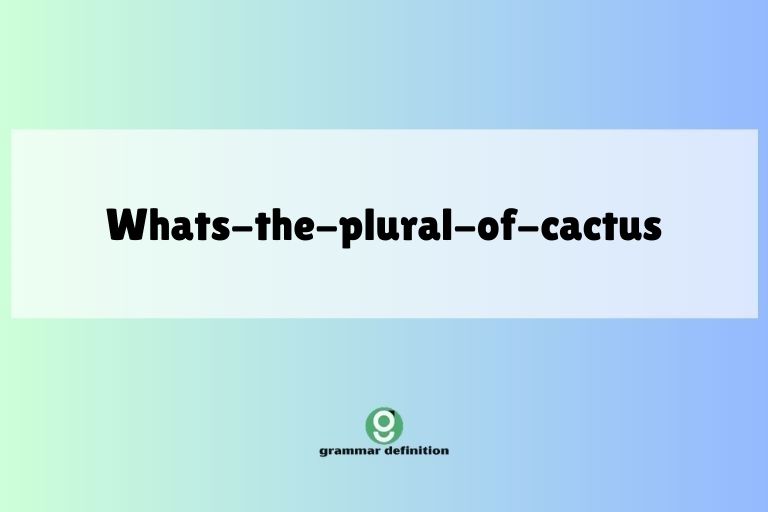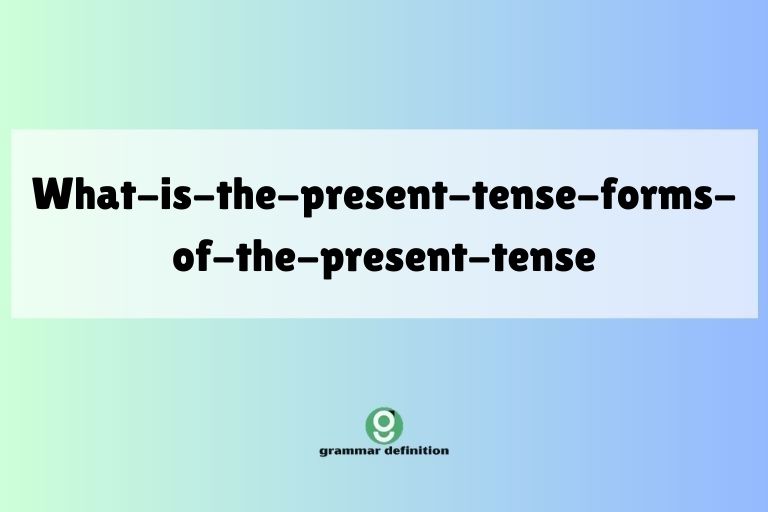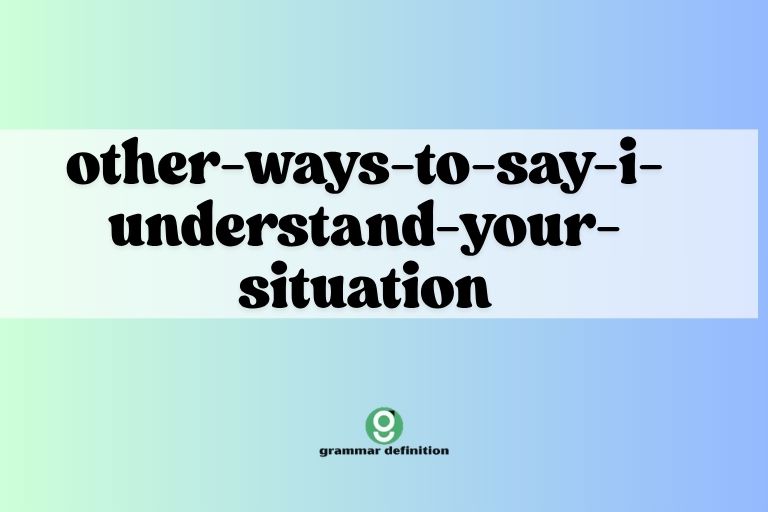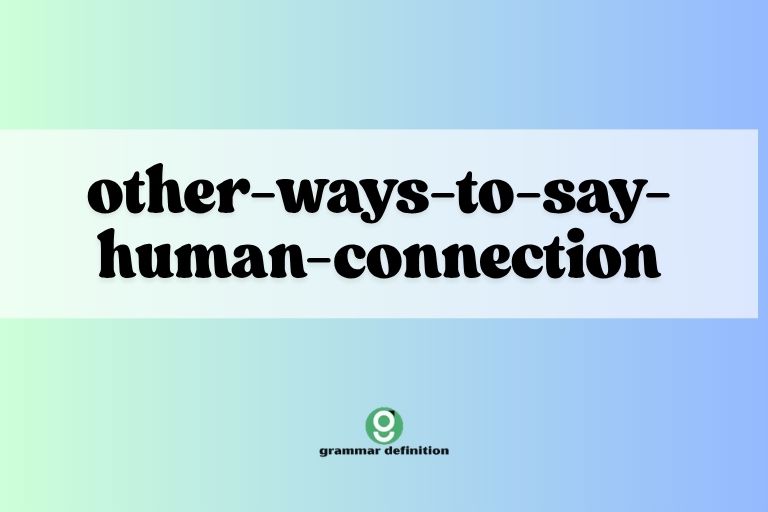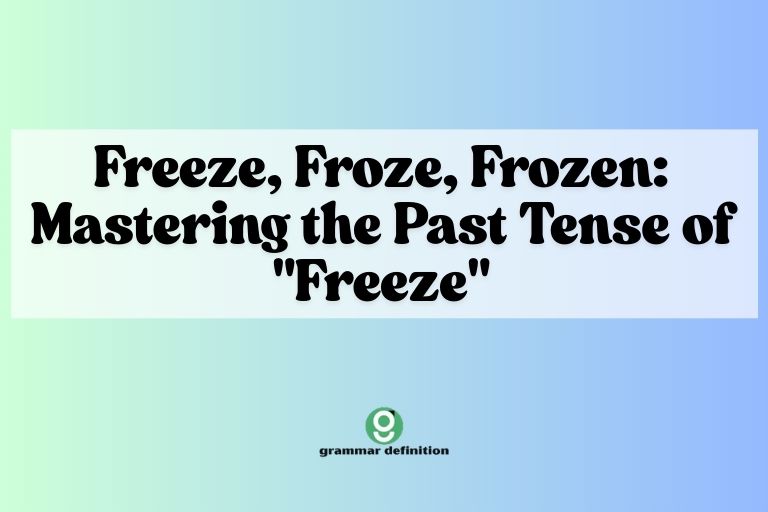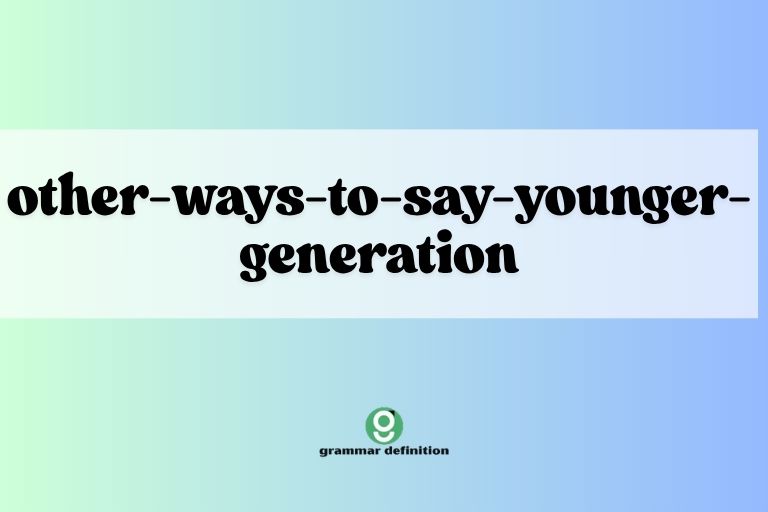Mastering Punctuation: Definitions, Usage, and Examples
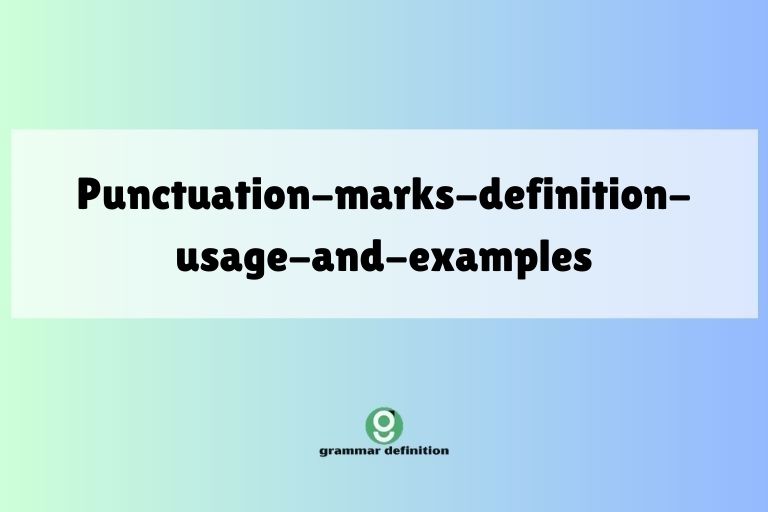
Punctuation marks are the unsung heroes of written language. They provide structure, clarity, and rhythm, transforming a mere string of words into a cohesive and understandable message.
Without proper punctuation, even the most brilliant ideas can become muddled and confusing. Understanding punctuation is crucial for effective communication, whether you’re writing a formal essay, a casual email, or a creative story.
This article will serve as a comprehensive guide to punctuation, covering the definition, usage rules, common mistakes, and advanced topics. Whether you’re a student, a professional writer, or simply someone looking to improve your writing skills, this guide will provide you with the knowledge and practice you need to master punctuation.
Table of Contents
- Introduction
- Definition of Punctuation
- Structural Breakdown
- Types of Punctuation
- Examples of Punctuation Usage
- Punctuation Usage Rules
- Common Punctuation Mistakes
- Practice Exercises
- Advanced Punctuation Topics
- Frequently Asked Questions
- Conclusion
Definition of Punctuation
Punctuation refers to the system of symbols and signs used in writing to separate sentences and their elements, and to clarify meaning. These marks guide the reader through the text, signaling pauses, emphasis, and relationships between words, phrases, and clauses. Punctuation is essential for creating clear, concise, and effective written communication. Without it, sentences can become ambiguous, and the intended meaning may be lost. Punctuation marks are like the traffic signals of writing, directing the flow of information and preventing collisions of ideas.
Structural Breakdown
Punctuation works at multiple levels within a text. At the sentence level, end marks like periods, question marks, and exclamation points signal the completion of a thought.
Within sentences, internal punctuation such as commas, semicolons, and colons help to organize and connect different parts of a sentence. Bracketing punctuation, including parentheses, brackets, and dashes, is used to add extra information or to set off specific elements.
The strategic use of punctuation enhances readability and ensures that the writer’s intended meaning is accurately conveyed. Understanding the structural role of each punctuation mark is key to mastering effective written communication.
Types of Punctuation
Punctuation marks can be classified into three main categories based on their function: end marks, internal punctuation, and bracketing punctuation. Each category serves a distinct purpose in structuring and clarifying written text.
End Marks
End marks indicate the end of a sentence. The three primary end marks are:
- Period (.): Used to end declarative sentences, mild imperatives, and indirect questions.
- Question Mark (?): Used to end interrogative sentences (direct questions).
- Exclamation Point (!): Used to end sentences expressing strong emotion or emphasis.
Internal Punctuation
Internal punctuation marks are used within sentences to separate and clarify elements. Common types include:
- Comma (,): Used to separate items in a list, clauses in a sentence, and to set off introductory elements.
- Semicolon (;): Used to connect closely related independent clauses and to separate items in a complex list.
- Colon (:): Used to introduce a list, explanation, or quotation.
- Apostrophe (‘): Used to indicate possession or to form contractions.
- Quotation Marks (” “): Used to enclose direct quotations and to indicate titles of short works.
Bracketing Punctuation
Bracketing punctuation is used in pairs to enclose additional information or to set off specific elements within a sentence. Types include:
- Parentheses ( ): Used to enclose supplementary information, explanations, or asides.
- Brackets [ ]: Used to enclose editorial comments or corrections within a quotation.
- Dashes (—): Used to indicate a sudden break in thought, an interruption, or to set off an explanatory phrase.
- Hyphen (-): Used to join words together to form compound words or to divide words at the end of a line.
- Ellipsis (…): Used to indicate omitted words or a trailing off of thought.
Examples of Punctuation Usage
The following sections provide extensive examples of how each punctuation mark is used in different contexts. These examples will help you understand the nuances of punctuation and improve your writing skills.
Periods
The period is used to mark the end of a declarative sentence. It indicates a full stop and a complete thought.
The table below provides examples of period usage.
| Sentence | Explanation |
|---|---|
| The cat sat on the mat. | Simple declarative sentence. |
| She enjoys reading novels. | Another declarative statement. |
| Please close the door. | Mild imperative sentence. |
| I wonder what time it is. | Indirect question. |
| The meeting will be held on Tuesday. | Statement of fact. |
| He is a talented musician. | Descriptive statement. |
| They went to the park yesterday. | Reporting a past event. |
| She is studying hard for her exams. | Describing an ongoing action. |
| We will travel to Europe next summer. | Expressing a future plan. |
| The sun sets in the west. | General truth. |
| Water boils at 100 degrees Celsius. | Scientific fact. |
| My favorite color is blue. | Personal preference. |
| He works as a software engineer. | Describing an occupation. |
| They live in a small town. | Statement of location. |
| She is a kind and generous person. | Describing character. |
| The book was very interesting. | Expressing an opinion. |
| We had a great time at the party. | Sharing an experience. |
| The weather is beautiful today. | Describing current conditions. |
| I am looking forward to the weekend. | Expressing anticipation. |
| She is a talented artist. | Describing skill. |
| The movie was very entertaining. | Expressing enjoyment. |
| He is a dedicated teacher. | Describing commitment. |
| They are planning a vacation. | Describing a future event. |
| She is a successful businesswoman. | Describing achievement. |
| The food was delicious. | Expressing taste. |
Commas
Commas are versatile punctuation marks used to separate elements within a sentence. They can indicate pauses, separate items in a list, set off introductory phrases, and more.
The table below provides examples of comma usage.
| Sentence | Explanation |
|---|---|
| I bought apples, bananas, and oranges. | Separating items in a list. |
| After the rain, the sun came out. | Setting off an introductory phrase. |
| She is intelligent, kind, and beautiful. | Separating adjectives. |
| However, I disagree with you. | Setting off a transitional word. |
| John, my best friend, is coming over. | Setting off a nonrestrictive clause. |
| To succeed, you must work hard. | Separating an infinitive phrase. |
| Yes, I will be there. | Separating an introductory word. |
| The house, which is very old, needs repairs. | Setting off a nonessential clause. |
| Running quickly, he caught the bus. | Separating a participial phrase. |
| Despite the challenges, they persevered. | Setting off a prepositional phrase. |
| He ate dinner, watched TV, and went to bed. | Separating a series of actions. |
| In fact, it was a great experience. | Setting off an introductory phrase. |
| She is a talented singer, songwriter, and musician. | Separating a list of roles. |
| Moreover, it is important to consider all options. | Setting off a transitional word. |
| The book, a bestseller, was well-written. | Setting off an appositive. |
| Having finished the work, he went home. | Separating a perfect participial phrase. |
| Regardless of the weather, we will go hiking. | Setting off a prepositional phrase. |
| He studied hard, passed the exam, and celebrated. | Separating a series of events. |
| For example, consider the following scenario. | Setting off an introductory phrase. |
| She is a dedicated teacher, mentor, and friend. | Separating a list of roles. |
| Furthermore, it is crucial to follow the guidelines. | Setting off a transitional word. |
| The car, a vintage model, was beautifully restored. | Setting off an appositive. |
| Having read the book, she understood the plot. | Separating a perfect participial phrase. |
| In spite of the difficulties, they succeeded. | Setting off a prepositional phrase. |
| He worked diligently, completed the project, and earned praise. | Separating a series of actions. |
Semicolons
Semicolons are used to connect two independent clauses that are closely related or to separate items in a complex list.
The table below provides examples of semicolon usage.
| Sentence | Explanation |
|---|---|
| The sun was shining; it was a beautiful day. | Connecting two related independent clauses. |
| I went to the store; however, they were closed. | Connecting clauses with a transitional word. |
| We visited Paris, France; Rome, Italy; and London, England. | Separating items in a complex list. |
| She loves to read; it is her favorite hobby. | Connecting related ideas. |
| He is a talented musician; he plays the guitar, piano, and drums. | Providing additional information. |
| The project was successful; the team worked hard. | Showing cause and effect. |
| It was raining heavily; therefore, we stayed inside. | Connecting clauses with a conjunctive adverb. |
| She is very intelligent; in fact, she is a genius. | Adding emphasis. |
| They studied diligently; as a result, they passed the exam. | Showing consequence. |
| He enjoys cooking; he often experiments with new recipes. | Providing context. |
| The meeting was productive; several important decisions were made. | Summarizing the outcome. |
| She is a dedicated teacher; she always puts her students first. | Explaining her commitment. |
| The concert was amazing; the band played all their hits. | Describing the event. |
| He is a skilled athlete; he excels in multiple sports. | Highlighting his abilities. |
| The movie was captivating; the plot was full of twists and turns. | Providing details about the film. |
| She is a talented writer; her novels are critically acclaimed. | Showing her success. |
| The restaurant was excellent; the food and service were impeccable. | Describing the dining experience. |
| He is a respected leader; he inspires his team to achieve great things. | Explaining his leadership qualities. |
| The garden was beautiful; flowers of every color were in bloom. | Describing the scenery. |
| She is a compassionate person; she volunteers at a local charity. | Showing her kindness. |
| The project was challenging; however, the team overcame all obstacles. | Describing the difficulties and success. |
| He is a knowledgeable expert; he has years of experience in the field. | Establishing his expertise. |
| The event was well-organized; everything ran smoothly. | Describing the efficiency of the event. |
| She is a creative artist; her paintings are unique and inspiring. | Highlighting her artistic talent. |
| The conference was informative; attendees learned about the latest trends. | Describing the value of the conference. |
Colons
Colons are used to introduce a list, explanation, or quotation. They signal that what follows will further explain or expand upon what precedes them.
The table below provides examples of colon usage.
| Sentence | Explanation |
|---|---|
| I need the following items: milk, bread, and eggs. | Introducing a list. |
| There is only one thing to do: run! | Introducing an explanation. |
| She said: “I will be there.” | Introducing a quotation. |
| The recipe requires these ingredients: flour, sugar, and butter. | Introducing a list of ingredients. |
| He gave me some advice: always be honest. | Introducing a piece of advice. |
| The problem is clear: we need more resources. | Introducing a clarification. |
| The store sells a variety of items: clothing, books, and electronics. | Introducing a list of products. |
| There are two options: accept the offer or decline it. | Introducing a set of choices. |
| He had one goal in mind: to succeed. | Introducing a purpose. |
| She made a simple request: please be on time. | Introducing a request. |
| The evidence suggests the following: he is guilty. | Introducing a conclusion. |
| The team needs three things: dedication, hard work, and collaboration. | Introducing a list of requirements. |
| He offered a solution: increase funding. | Introducing a proposed solution. |
| The conclusion is obvious: we must take action. | Introducing a decisive statement. |
| She gave a compelling reason: she needed to support her family. | Introducing a justification. |
| The report highlights several issues: lack of funding, poor management, and inadequate training. | Introducing a list of problems. |
| He made a surprising announcement: he was retiring. | Introducing a significant piece of news. |
| The research revealed a key finding: early intervention is crucial. | Introducing an important discovery. |
| She had a clear vision: to create a better world. | Introducing a guiding principle. |
| The company has three core values: integrity, innovation, and customer satisfaction. | Introducing a list of values. |
| He presented a persuasive argument: the benefits outweigh the risks. | Introducing a convincing point. |
| The plan includes the following steps: research, development, and implementation. | Introducing a series of actions. |
| She expressed her gratitude: thank you for your support. | Introducing an expression of thanks. |
| The result was predictable: failure. | Introducing an expected outcome. |
| He provided a detailed explanation: he described the process step by step. | Introducing a thorough account. |
Question Marks
Question marks are used at the end of interrogative sentences, indicating a direct question.
The table below provides examples of question mark usage.
| Sentence | Explanation |
|---|---|
| What is your name? | Direct question. |
| Where are you going? | Asking about destination. |
| Are you coming to the party? | Yes/no question. |
| Why are you so late? | Asking for a reason. |
| How old are you? | Asking about age. |
| Can you help me with this? | Asking for assistance. |
| Will you be there? | Asking about future attendance. |
| Do you understand? | Checking for comprehension. |
| Have you finished your work? | Asking about completion. |
| Is it raining outside? | Asking about weather conditions. |
| Did you see the movie? | Asking about a past event. |
| Should we leave now? | Suggesting a course of action. |
| Could you please repeat that? | Asking for repetition. |
| Are they coming with us? | Asking about companionship. |
| Was the meeting successful? | Asking about outcome. |
| Am I making sense? | Checking for clarity. |
| Are we there yet? | Asking about arrival. |
| Can you hear me clearly? | Checking audio quality. |
| Will it be easy to find? | Asking about accessibility. |
| Do you have any questions? | Soliciting inquiries. |
| What is the capital of France? | Asking for specific information |
| Who is the author of that book? | Asking for author information |
| When does the store open? | Asking about opening time |
| Which color do you prefer? | Asking for preference |
| How much does it cost? | Asking about price |
Exclamation Points
Exclamation points are used to express strong emotion, surprise, or emphasis.
The table below provides examples of exclamation point usage.
| Sentence | Explanation |
|---|---|
| That’s amazing! | Expressing excitement. |
| Watch out! | Warning of danger. |
| I can’t believe it! | Expressing disbelief. |
| Help! | Calling for assistance. |
| Congratulations! | Offering congratulations. |
| That’s incredible! | Expressing admiration. |
| I’m so happy! | Expressing joy. |
| Stop! | Giving a command. |
| What a surprise! | Expressing astonishment. |
| I won the lottery! | Expressing extreme luck. |
| It’s a miracle! | Expressing awe |
| I can’t stand it anymore! | Expressing frustration |
| This is the best day ever! | Expressing happiness |
| Run for your lives! | Expressing urgency |
| I finally did it! | Expressing accomplishment |
| That was a fantastic performance! | Expressing praise |
| I’m so proud of you! | Expressing pride |
| What a beautiful view! | Expressing appreciation |
| I’m so relieved! | Expressing relief |
| This is outrageous! | Expressing indignation |
| I’m utterly shocked! | Expressing shock |
| What a disappointment! | Expressing sadness |
| I’m so grateful! | Expressing gratitude |
| This is unbelievable! | Expressing incredulity |
| I’m absolutely thrilled! | Expressing excitement |
Apostrophes
Apostrophes are used to indicate possession or to form contractions.
The table below provides examples of apostrophe usage.
| Sentence | Explanation |
|---|---|
| John’s car is red. | Indicating possession. |
| It’s raining today. | Forming a contraction (it is). |
| The dog’s bone is buried. | Indicating possession. |
| They’re going to the movies. | Forming a contraction (they are). |
| She’s a talented artist. | Forming a contraction (she is). |
| The company’s profits increased. | Indicating possession. |
| We’re planning a vacation. | Forming a contraction (we are). |
| The children’s toys are scattered. | Indicating plural possession. |
| He’s coming to the party. | Forming a contraction (he is). |
| The cat’s fur is soft. | Indicating possession. |
| You’re my best friend. | Forming a contraction (you are). |
| The team’s success is well-deserved. | Indicating possession. |
| I haven’t seen him in years. | Forming a contraction (have not). |
| The bird’s nest is high in the tree. | Indicating possession. |
| They aren’t coming to the game. | Forming a contraction (are not). |
| The student’s essay was excellent. | Indicating possession. |
| She doesn’t like coffee. | Forming a contraction (does not). |
| The car’s engine is powerful. | Indicating possession. |
| We can’t go to the beach today. | Forming a contraction (cannot). |
| The artist’s paintings are famous. | Indicating possession. |
| I wouldn’t do that if I were you. | Forming a contraction (would not). |
| The company’s headquarters are in New York. | Indicating possession |
| He hadn’t finished his assignment. | Forming a contraction (had not). |
| The actor’s performance was outstanding. | Indicating possession |
| They shouldn’t have done that. | Forming a contraction (should not). |
Quotation Marks
Quotation marks are used to enclose direct quotations and to indicate titles of short works.
The table below provides examples of quotation mark usage.
| Sentence | Explanation |
|---|---|
| She said, “Hello, how are you?” | Enclosing a direct quotation. |
| He asked, “What time is it?” | Enclosing a direct question. |
| The title of the short story is “The Gift of the Magi.” | Indicating the title of a short work. |
| “I will be there,” she promised. | Enclosing a direct quotation. |
| He exclaimed, “That’s amazing!” | Enclosing an exclamation. |
| She quoted Shakespeare: “To be or not to be.” | Enclosing a famous quote. |
| The poem “The Raven” is a classic. | Indicating the title of a poem. |
| He said, “I need some help.” | Enclosing a request. |
| The song “Yesterday” is one of their best. | Indicating the title of a song. |
| She whispered, “I love you.” | Enclosing a tender sentiment. |
| He asked, “Are you ready?” | Enclosing a question. |
| The essay “Self-Reliance” is very influential. | Indicating the title of an essay. |
| She replied, “I’m not sure.” | Enclosing an uncertain response. |
| He said, “Let’s go!” | Enclosing an enthusiastic suggestion. |
| The article “The Future of Technology” is insightful. | Indicating the title of an article. |
| She admitted, “I made a mistake.” | Enclosing an admission. |
| He shouted, “Fire!” | Enclosing an urgent warning. |
| The chapter “Introduction to Grammar” is essential. | Indicating the title of a chapter. |
| She explained, “It’s very simple.” | Enclosing an explanation. |
| He announced, “I have good news!” | Enclosing an exciting announcement. |
| She inquired, “Is everything okay?” | Enclosing a concerned question. |
| The play “Hamlet” is a masterpiece. | Indicating the title of a play. |
| He confessed, “I was wrong.” | Enclosing a confession. |
| She exclaimed, “This is amazing!” | Enclosing an exclamation of excitement. |
| He asked, “Can you help me, please?” | Enclosing a polite request. |
Parentheses
Parentheses are used to enclose supplementary information, explanations, or asides.
The table below provides examples of parentheses usage.
| Sentence | Explanation |
|---|---|
| The meeting (which was very long) ended late. | Adding supplementary information. |
| He is a talented musician (he plays the piano and guitar). | Providing an explanation. |
| The project (due next Friday) is almost complete. | Adding a deadline. |
| She is a doctor (specializing in cardiology). | Providing a specialization. |
| The book (a bestseller) is highly recommended. | Adding a descriptor. |
| He decided to travel (despite the weather). | Adding a condition. |
| The company (founded in 1990) is very successful. | Adding a founding date. |
| She is a great teacher (her students love her). | Adding a reason. |
| The movie (directed by Spielberg) is a classic. | Adding a director’s name. |
| He likes to read (especially science fiction). | Adding a preference. |
| The event (held last night) was a success. | Adding a time reference. |
| She is an excellent athlete (she runs marathons). | Providing an example. |
| The restaurant (located downtown) is very popular. | Adding a location. |
| He is a skilled programmer (he knows several languages). | Providing details |
| The new policy (effective next month) will change things. | Adding implementation details |
| She is a dedicated volunteer (she helps at the shelter). |
Adding a detail about her volunteering. |
| The concert (featuring local artists) was well-attended. | Adding information about the performers. |
| He enjoys hiking (especially in the mountains). | Adding a specific preference. |
| The conference (organized by the university) was very informative. | Adding information about the organizer. |
| She is a talented writer (she has published several books). | Providing evidence of her talent. |
| The project (funded by the government) aims to improve infrastructure. | Adding information about funding. |
| He is a respected professor (he has taught for over 20 years). | Providing details about his experience. |
| The exhibition (featuring contemporary art) is now open. | Adding information about the art style. |
| She is a successful entrepreneur (she owns several businesses). | Providing evidence of her success. |
Brackets
Brackets are used to enclose editorial comments or corrections within a quotation.
The table below provides examples of bracket usage.
| Sentence | Explanation |
|---|---|
| “He said he would be there [on time],” the witness stated. | Adding clarification to a quotation. |
| The author wrote, “It was a long and arduous journey [indeed].” | Adding emphasis within a quotation. |
| “The document stated that the meeting would be held on the 15th [of July],” the lawyer explained. | Adding specific date information. |
| “The speaker claimed that the results were significant [although some disagreed],” the reporter noted. | Adding a contrasting viewpoint. |
| “She mentioned that she was going to visit her family [in California],” he recalled. | Adding location details. |
| “The report indicated a decline in sales [of 20%],” the analyst said. | Adding precise figures. |
| “He emphasized the importance of education [for future generations],” the educator explained. | Adding context to the emphasis. |
| “The artist described his inspiration as ‘a moment of pure bliss [and creativity],'” the critic quoted. | Adding additional emotional context. |
| “The scientist stated that the experiment was a success [after multiple attempts],” the journalist reported. | Adding details about the process. |
| “The historian wrote that the event changed the course of history [forever],” the professor explained. | Adding a long-term impact. |
| “The witness testified that he saw the suspect [clearly] at the scene,” the detective noted. | Adding a detail about the visibility. |
| “The author explained that the characters were based on real people [he knew],” the interviewer stated. | Adding information about the inspiration. |
| “The CEO mentioned that the company was expanding [internationally],” the investor reported. | Adding details about the expansion. |
| “The doctor stated that the treatment was effective [in most cases],” the patient recalled. | Adding information about the treatment’s effectiveness. |
| “The researcher found that the results were conclusive [with a high degree of certainty],” the scientist explained. | Adding details about the certainty of the results. |
| “The politician promised to reduce taxes [significantly],” the journalist reported. | Adding information about the extent of the reduction. |
| “The chef explained that the secret ingredient was ‘a pinch of love [and patience],'” the food critic wrote. | Adding emotional and process-related details. |
| “The pilot announced that the flight would be delayed [due to weather conditions],” the passenger recalled. | Adding a reason for the delay. |
| “The teacher emphasized the importance of reading [every day],” the student noted. | Adding a detail about the frequency. |
| “The coach stated that the team needed to improve their defense [strategy],” the sports reporter wrote. | Adding information about the area of improvement. |
| “The architect described the design as ‘innovative [and sustainable],'” the reviewer noted. | Adding additional qualities of the design. |
| “The programmer explained that the software was user-friendly [and efficient],” the tester reported. | Adding qualities of the software. |
| “The musician described the song as ’emotional [and uplifting],'” the fan recalled. | Adding emotional qualities of the song. |
| “The detective stated that the evidence was circumstantial [but compelling],” the lawyer noted. | Adding details about the evidence. |
| “The historian wrote that the revolution changed society [profoundly],” the professor explained. | Adding details about the impact of the revolution. |
Dashes
Dashes are used to indicate a sudden break in thought, an interruption, or to set off an explanatory phrase.
The table below provides examples of dash usage.
| Sentence | Explanation |
|---|---|
| I was thinking about—oh, never mind. | Indicating a sudden break in thought. |
| She is—wait, let me think—a brilliant scientist. | Indicating an interruption. |
| The cake—delicious and moist—was a hit. | Setting off an explanatory phrase. |
| He wanted to go—no, he needed to go—to the store. | Indicating a change in thought. |
| The project—complex and challenging—was finally completed. | Setting off descriptive adjectives. |
| I have to tell you—it’s important—that I’m leaving. | Adding emphasis to the importance. |
| She decided to—after much deliberation—accept the offer. | Indicating a delayed decision. |
| The weather—unpredictable as always—changed suddenly. | Adding a comment on unpredictability. |
| He is a talented musician—a true virtuoso. | Adding an appositive phrase. |
| The concert—loud and energetic—was unforgettable. | Describing the concert’s atmosphere. |
| I need to buy—quickly—some groceries. | Adding emphasis on urgency. |
| The movie—visually stunning—was a masterpiece. | Describing the movie’s visual aspects. |
| She is—without a doubt—the best candidate. | Adding emphasis on her qualifications. |
| The book—intriguing and suspenseful—kept me up all night. | Describing the book’s qualities. |
| He promised to—eventually—finish the work. | Indicating a delayed promise. |
| The team—dedicated and hardworking—achieved great success. | Describing the team’s characteristics. |
| I wanted to say—but couldn’t—how I felt. | Indicating suppressed feelings. |
| The food—delicious and flavorful—was a culinary delight. | Describing the food’s taste. |
| She is—surprisingly—very good at sports. | Adding an element of surprise. |
| The plan—ambitious and innovative—was well-received. | Describing the plan’s nature. |
| I need to—immediately—address this issue. | Adding emphasis on the need for immediate action. |
| The performance—emotional and captivating—moved the audience. | Describing the performance’s impact. |
| She is—in my opinion—a true leader. | Adding a personal opinion. |
| The research—thorough and comprehensive—provided valuable insights. | Describing the research’s quality. |
| I have to tell you—it’s confidential—what happened. | Emphasizing the confidentiality of the information. |
Hyphens
Hyphens are used to join words together to form compound words or to divide words at the end of a line.
The table below provides examples of hyphen usage.
| Sentence | Explanation |
|---|---|
| She is a well-known author. | Forming a compound adjective. |
| He works full-time. | Forming a compound adjective. |
| The project is long-term. | Forming a compound adjective. |
| She is self-employed. | Forming a compound adjective. |
| The event is family-friendly. | Forming a compound adjective. |
| He is a fast-paced worker. | Forming a compound adjective. |
| The solution is cost-effective. | Forming a compound adjective. |
| She is a world-renowned expert. | Forming a compound adjective. |
| The policy is user-friendly. | Forming a compound adjective. |
| He is a record-breaking athlete. | Forming a compound adjective. |
| The design is state-of-the-art. | Forming a compound adjective. |
| The approach is hands-on. | Forming a compound adjective. |
| She is a forward-thinking leader. | Forming a compound adjective. |
| The company is technology-driven. | Forming a compound adjective. |
| He is a highly-skilled professional. | Forming a compound adjective. |
| The product is eco-friendly. | Forming a compound adjective. |
| She is a goal-oriented individual. | Forming a compound adjective. |
| The strategy is market-driven. | Forming a compound adjective. |
| He is a detail-oriented person. | Forming a compound adjective. |
| The system is cloud-based. | Forming a compound adjective. |
| She is a data-driven analyst. | Forming a compound adjective. |
| The solution is client-focused. | Forming a compound adjective. |
| He is a results-oriented manager. | Forming a compound adjective. |
| The approach is team-based. | Forming a compound adjective. |
| She is a quality-conscious consumer. | Forming a compound adjective. |
Ellipses
Ellipses are used to indicate omitted words or a trailing off of thought.
The table below provides examples of ellipsis usage.
| Sentence | Explanation |
|---|---|
| He started to speak, but… | Indicating a trailing off of thought. |
| The instructions said to mix the ingredients… then bake. | Indicating omitted steps. |
| She was thinking about… well, it doesn’t matter. | Indicating an unspoken thought. |
| The story went on and on… | Indicating a continuation of something. |
| If only I had… | Indicating a regretful thought. |
| He knew what to do… but hesitated. | Indicating a pause in action. |
| She began to explain… but stopped abruptly. | Indicating a sudden stop in speaking. |
| The possibilities are endless… | Indicating a vast range of options. |
| He remembered the day when… | Indicating a reminiscence. |
| She thought about the future… and smiled. | Indicating a contemplative thought. |
| He started to sing… but forgot the words. | Indicating a lapse in memory. |
| She wanted to say something… but remained silent. | Indicating a suppressed feeling. |
| The road ahead seemed long… | Indicating a sense of duration. |
| He looked at her… and knew. | Indicating a silent understanding. |
| She began to cry… | Indicating an onset of emotion. |
| He felt a sense of… something he couldn’t name. | Indicating an undefined feeling. |
| She waited… patiently. | Indicating a passage of time. |
| He wondered what would happen… next. | Indicating anticipation. |
| She whispered softly… almost inaudibly. | Indicating a quiet tone. |
| He tried to explain… but couldn’t find the right words. | Indicating a struggle to articulate. |
| She started to dance… | Indicating the beginning of an action. |
| He thought about the past… and sighed. | Indicating reflection and emotion. |
| She gazed into the distance… | Indicating a faraway look. |
| He tried to remember… but it was too long ago. | Indicating the fading of memory. |
| She began to laugh… uncontrollably. | Indicating an outburst of emotion. |
Punctuation Usage Rules
Understanding punctuation usage rules is essential for clear and effective writing. These rules provide a framework for structuring sentences and conveying meaning accurately.
While some rules are strict, others allow for stylistic variation. Mastering these guidelines will significantly enhance your writing skills.
Here are some key punctuation usage rules:
- Periods: Use periods to end declarative sentences, mild commands, and indirect questions.
- Commas: Use commas to separate items in a list, set off introductory elements, and separate independent clauses joined by a coordinating conjunction.
- Semicolons: Use semicolons to connect closely related independent clauses or to separate items in a complex list.
- Colons: Use colons to introduce a list, explanation, or quotation.
- Question Marks: Use question marks to end direct questions.
- Exclamation Points: Use exclamation points to express strong emotion or emphasis sparingly.
- Apostrophes: Use apostrophes to indicate possession or to form contractions.
- Quotation Marks: Use quotation marks to enclose direct quotations and titles of short works.
- Parentheses: Use parentheses to enclose supplementary information or explanations.
- Brackets: Use brackets to enclose editorial comments or corrections within quotations.
- Dashes: Use dashes to indicate a sudden break in thought, an interruption, or to set off explanatory phrases.
- Hyphens: Use hyphens to join words together to form compound words or to divide words at the end of a line.
- Ellipses: Use ellipses to indicate omitted words or a trailing off of thought.
Common Punctuation Mistakes
Even experienced writers can make punctuation mistakes. Recognizing these common errors is the first step in avoiding them.
This section outlines frequent punctuation errors and provides guidance on how to correct them.
Here are some common punctuation mistakes to watch out for:
- Comma Splices: Incorrectly joining two independent clauses with only a comma. Use a semicolon or a coordinating conjunction.
- Run-on Sentences: Failing to separate independent clauses, resulting in a long and confusing sentence.
- Incorrect Apostrophe Usage: Misplacing apostrophes in possessive nouns or contractions.
- Misuse of Semicolons: Using semicolons to separate unrelated clauses.
- Overuse of Exclamation Points: Using too many exclamation points, which can diminish their impact.
- Incorrect Quotation Mark Placement: Placing quotation marks outside of other punctuation marks incorrectly.
- Dangling Modifiers: Mispunctuating sentences, leading to unclear or unintended meanings.
- Misuse of Dashes and Hyphens: Confusing the use of dashes for emphasis with the use of hyphens for compound words.
- Ellipsis Abuse: Overusing ellipses, which can make writing seem hesitant or unclear.
- Lack of Parallelism: Failing to use consistent punctuation in parallel structures.
Practice Exercises
Practice is key to mastering punctuation. The following exercises will help you reinforce your understanding of punctuation rules and improve your ability to use punctuation correctly.
Exercise 1: Correct the Sentences
Correct the punctuation in the following sentences:
- The cat sat on the mat it was very comfortable.
- She said I will be there.
- Johns car is red.
- The book which is a bestseller is very long.
- He is a well known author.
Answers:
- The cat sat on the mat; it was very comfortable. (Corrected with a semicolon)
- She said, “I will be there.” (Corrected with quotation marks and a comma)
- John’s car is red. (Corrected apostrophe placement)
- The book, which is a bestseller, is very long. (Corrected with commas)
- He is a well-known author. (Corrected with a hyphen)
Exercise 2: Fill in the Blanks
Fill in the blanks with the correct punctuation mark:
- I need to buy milk ____ eggs ____ and bread.
- She asked ____ What time is it ____
- He is a talented musician ____ he plays the guitar and piano.
- The meeting is scheduled for Tuesday ____ July 11.
- Theyre going to the park ____ its a beautiful day.
Answers:
- I need to buy milk, eggs, and bread. (Commas)
- She asked, “What time is it?” (Comma, Question Mark, Quotation Marks)
- He is a talented musician; he plays the guitar and piano. (Semicolon)
- The meeting is scheduled for Tuesday, July 11. (Comma)
- They’re going to the park; it’s a beautiful day. (Apostrophe, Semicolon)
Exercise 3: Identify the Error
Identify the punctuation error in each sentence:
- Having finished the work he went home.
- She said that she was tired.
- The teams success is well-deserved.
- He is intelligent kind and funny.
- The weather is beautiful today isnt it?
Answers:
- Missing comma after “work”. (Comma needed after introductory phrase)
- Missing quotation marks around the direct quote. (Quotation marks needed)
- Incorrect apostrophe placement; should be “team’s”. (Apostrophe placement)
- Missing commas between adjectives. (Commas needed between adjectives)
- Incorrect punctuation; should be a question mark, and “isn’t it” needs an apostrophe. (Question mark and apostrophe needed)
Advanced Punctuation Topics
Beyond the basic rules, there are advanced punctuation topics that can further refine your writing. These topics involve more nuanced applications of punctuation and can add depth and sophistication to your writing style.
Some advanced punctuation topics include:
- Serial Comma (Oxford Comma): The use of a comma before the coordinating conjunction in a list of three or more items.
- Em Dashes vs. En Dashes: Understanding the proper use of em dashes for emphasis and en dashes for ranges.
- Punctuation with Dialogue: Mastering the rules for punctuating sentences that include dialogue.
- Attributive Tags: Correctly punctuating phrases that attribute quotes to a speaker.
- Punctuation in Academic Writing: Adhering to specific punctuation guidelines in academic papers and research articles.
- Stylistic Punctuation Choices: Making intentional punctuation choices to create a specific tone or effect.
Frequently Asked Questions
What is the difference between a semicolon and a colon?
A semicolon connects two closely related independent clauses, while a colon introduces a list, explanation, or quotation.
When should I use an em dash instead of parentheses?
Use an em dash to indicate a stronger break or interruption in thought than parentheses would.
Is the Oxford comma always necessary?
The use of the Oxford comma is a matter of style. Some style guides recommend it for clarity, while others consider it optional.
How can I improve my punctuation skills?
Practice regularly, read widely, and consult a style guide. Pay attention to punctuation in well-written texts and seek feedback on your writing.
What is the role of punctuation in conveying tone?
Punctuation can significantly influence tone. For example, exclamation points can convey excitement, while ellipses can create a sense of mystery or hesitation.
Conclusion
Mastering punctuation is a crucial skill for effective written communication. By understanding the definitions, usage rules, and common mistakes associated with punctuation marks, you can significantly enhance the clarity and impact of your writing.
Consistent practice and attention to detail will help you develop confidence in your punctuation skills, allowing you to communicate your ideas with precision and style. Whether you’re writing a formal essay, a casual email, or a creative story, proper punctuation will ensure that your message is accurately conveyed and well-received.

